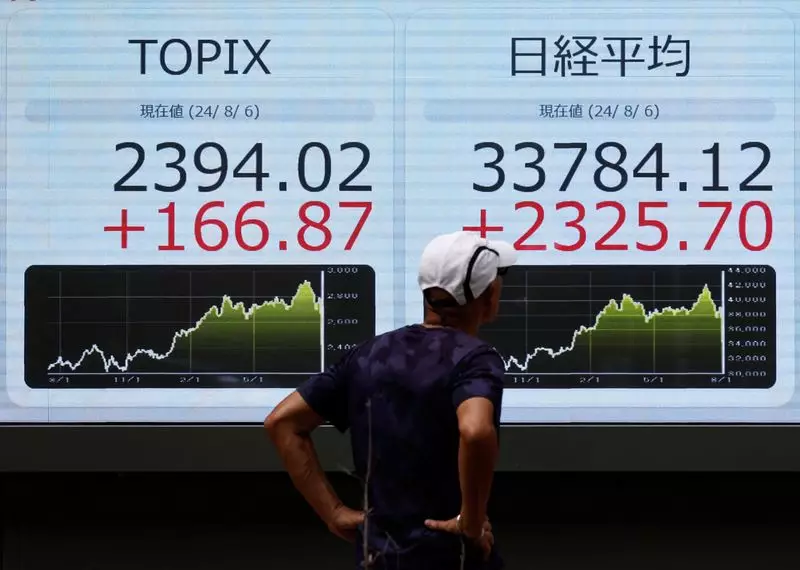As the economic landscape continues to evolve, investor sentiment in Asia has shown resilience, with stock indices reaching their highest levels in over two months. This upward momentum comes amid expectations of potential interest rate cuts in the United States, influencing market behaviors across the region. However, as central banks, particularly in Australia and China, implement their own monetary policies, analysts remain cautious about the sustainability of this optimism.
The recent decision by the Federal Reserve to cut interest rates by 50 basis points has reverberated through global markets, sparking discussions about similar measures in other economies, especially in Australia. The Australian market is awaiting a policy decision from the Reserve Bank of Australia (RBA), which is anticipated to maintain its current rates despite the Fed’s aggressive moves. Charu Chanana, head of currency strategy at Saxo, suggests that the RBA is committed to a hawkish stance centered on inflation control, which may only shift at the upcoming November meeting, contingent upon labor market assessments and the latest consumer price index data.
This indicates a divergence in monetary policy approaches between the Federal Reserve and the RBA, prompting investors to evaluate how these distinctions will affect currency fluctuations and overall market dynamics. The impending economic indicators are crucial as they will likely dictate investors’ perceptions and expectations moving forward.
China’s Economic Stimulus
Meanwhile, attention has turned to China as its regulatory authorities unveiled significant measures to address the country’s economic challenges. The central bank’s recent decision to lower the 14-day repo rate by 10 basis points serves as a crucial step aimed at boosting liquidity and consumer confidence. These actions, including adjustments to mortgage rates for existing homeowners, aim to stimulate economic activity amid fears of stalling growth.
The effectiveness of these measures, however, remains under scrutiny. Investors are keen to see if these initiatives can catalyze a genuine recovery or if they merely serve as temporary fixes. The interplay between Chinese economic health and global markets adds a layer of complexity for investors who must weigh potential benefits against underlying risks.
Despite the cautious tone surrounding global central banks, the MSCI Asia-Pacific index excluding Japan has stabilized, suggesting that investors are currently viewing these developments as a semblance of hope amid the prevailing uncertainties. Japan’s Nikkei index also saw significant gains, driven largely by market optimism regarding forthcoming speeches from financial governance figures. This kind of market reaction illustrates an awareness among traders that central bank policies will greatly influence market trajectories.
Investor sentiment remains precarious, however, as they grapple with varying expectations on whether the Fed will enact another extensive rate cut in the coming months. Evaluating the aforementioned market strategies reveals a tension between bullish optimism driven by stimulus measures and the potential for inflationary pressures that could arise from continuous rate reductions.
As financial markets navigate this complex terrain, currency values reflect these shifting sentiments. The U.S. dollar index, crucial for assessing U.S. currency strength against its rivals, hovers close to yearly lows, suggesting a weakening position influenced by dovish Fed predictions. Conversely, commodities, particularly oil, are experiencing a subtle uptick, although concerns over demand—exacerbated by weak economic indicators from Europe—persist.
Oil prices have responded to this duality, with modest increases indicating uncertainty around future supply and demand relationships. The price adjustments in this sector offer insights into broader economic health, underscoring the interconnectedness of global markets and the ripple effects of national policies.
Asian markets are in a delicate balancing act, navigating between the optimism stemming from potential U.S. rate cuts and the domestic policies enacted by central banks. While measure implementations in China indicate a proactive stance, sustained market confidence remains contingent upon how global monetary policies unfold. Investors will be closely monitoring upcoming economic indicators and central bank communications, as these will be pivotal in shaping the future landscape of financial markets in Asia and beyond.

